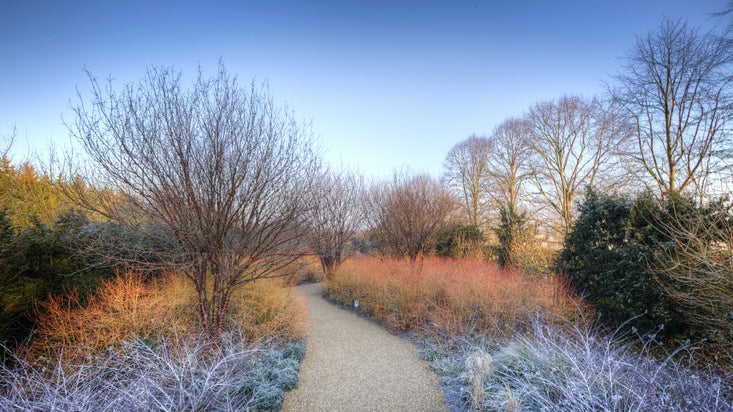Sycamore tree at Anglesey Abbey
- Published:
- 24 June 2024
- Last updated:
- 24 June 2024

The much-loved Sycamore tree at Anglesey Abbey has unfortunately come to the end of its life. Its decline has been caused by a fungal disease called ‘Sooty Bark Disease’ which has infected the tree from the base upward, causing it to die rapidly. We are very sad to see this Sycamore tree go but, in its place, we will be planting three new trees: a Mongolian Lime tree, a Black Walnut tree and a Bee tree.
Sycamore tree news
We have had to fell the tree to remove the risk of dead tree branches falling and fungus spores spreading to neighbouring trees. The potential health and safety hazard created by large tree branches falling has meant that we have needed to take action to protect visitors on our site.
During the prime of its life, the Sycamore tree was an eye-catching, beautiful green tree, standing proudly on the Arboretum. It has always had a special place in the landscape of the Anglesey Abbey gardens and for many years, it has been celebrated during our Winter Lights nature trail.
Nothing can be done to prevent the spread of Sooty Bark Disease, or to treat affected trees. So, we are very sad to see this Sycamore tree go but, in its place, we will be planting three new trees: a Mongolian Lime tree, a Black Walnut tree and a Bee tree.
What is Sooty Bark Disease?
Sooty bark disease is caused by a fungus called Cryptostroma corticale. The disease almost exclusively affects Sycamore, Acer pseudoplatanus, but can affect other maples.
The fungus spreads rapidly as its spores are windborne. When Sycamores experience significant stress in the form of droughts, the fungus is able to overwhelm their natural defences and quickly becomes lethal to the trees.
We experienced hot spells of weather and drought in the East of England during the summers of 2019 and 2022 which will have contributed to the decline of our Sycamore tree at Anglesey Abbey. With the increase in summer drought conditions from climate change, we are likely to see this disease at more locations across the UK in the future.
The fungus is thought to have originated in North America and was first documented in the UK in 1945, arriving here on the back of increased global trade. The fungus can be found living on dead wood and can lie dormant within healthy Sycamore trees but gradually puts them under stress.
Because the disease is airborne, there is nothing we can do to prevent its spread or to treat affected trees; it is likely the fungus is very widespread within the UK. Our response will focus on managing the safety implications of dying and dead trees near places people use, and then mitigating the ecological impact so far as possible. As an organisation we are planting 20 million trees by 2030 in order to help sequester carbon and fight climate change.
Explore the gardens at Anglesey Abbey
Find out more about Anglesey Abbey’s glorious gardens, from the seasonal highlights to the history and design behind them.
